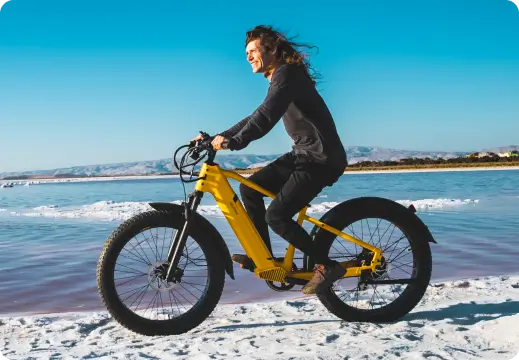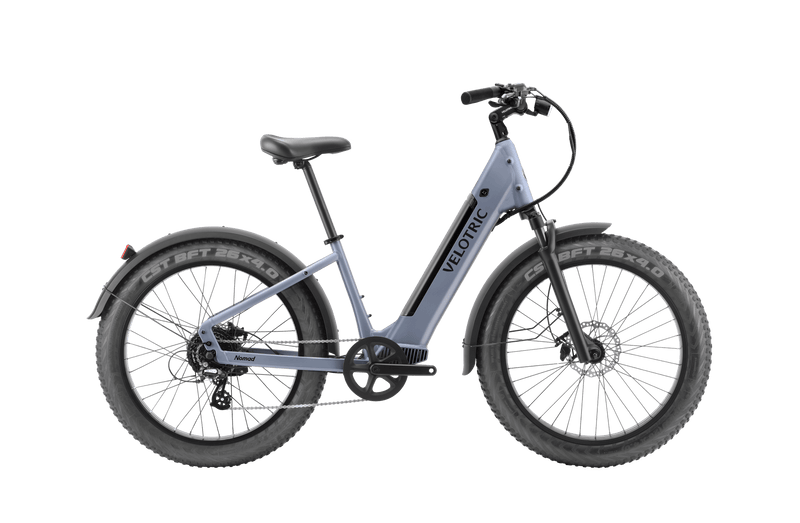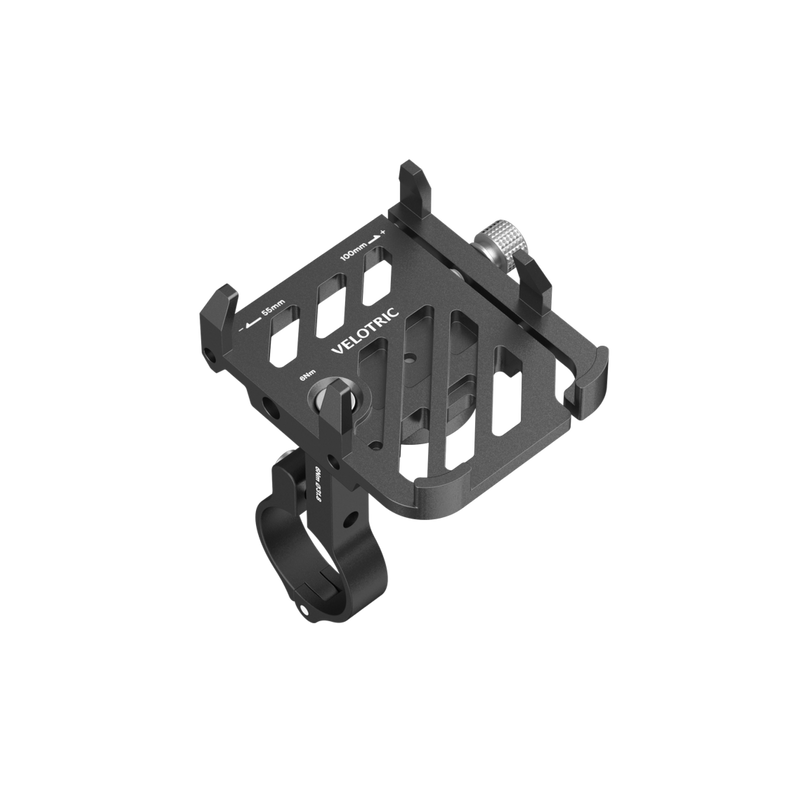Looking to take your e-bike out for a spin but wondering if you need a license to do so? No stress, friends: We’ve got you covered.
Different countries and regions have particular regulations and e-bike laws, so whether or not you need a license for your e-bike will vary. Some places consider electric bikes to be just like regular bikes, so no license is needed. In other areas, e-bikes are considered motorized vehicles, and a license is required.
As a general rule, if your electric bike has pedal assistance and has a maximum speed of 20-28 mph (32-45 km/h), it's usually considered a regular bike, and no license is required. However, if your e-bike can go faster or has a more powerful motor, you might need a license or registration.
Classes for e-Bikes: What To Know
If you’re riding in the United States, these laws will vary by state, but the majority of states follow a 3-Class system on how to categorize e-bikes.
- Class 1 e-bikes have an electric motor that provides assistance only when you're pedaling, and the motor stops when the bike reaches 20 mph.
- Class 2 e-bikes have an electric motor that provides assistance only when you're pedaling, but the motor can continue to assist you up to 20 mph.
- Class 3 e-bikes have an electric motor that provides assistance only when you're pedaling, and the motor stops when the bike reaches 28 mph (some states mandate riders to have a license for Class 3 bikes, while others do not).
Keep these fun facts in mind when using an e-bike in the four most populated states in the United States:
California
As the most populated state of the 50, you’re bound to see some people on e-bikes when out and about in California. California follows the 3-Class system of categorizing e-bikes, and you don’t need a license to operate any class of electric bike in the state of California. There are other rules e-bike riders must abide by these state laws when riding a Class 3 electric bike.
These rules include:
- Being at least 16 years of age
- Wearing a bicycle safety helmet
- Not transporting other passengers
- Riding an electric bicycle in a bicycle lane if authorized by local authority or ordinance
When it comes to using an e-bike on the highway, riding a motor-driven cycle, moped, motorized bicycle, or electric bicycle on a freeway or expressway is against the law if signs have been put up to prohibit their use.
It’s against state law to ride a moped, motorized bicycle, Class 3 electric bicycle (or any bike) on an equestrian, hiking, or recreational trail unless it’s next to a road. You can also ride there if you have permission to use the trail or roadway granted by local law.
There are some additional regulations for e-bike riders in The Golden State. For example, all e-bikes must be equipped with operable pedals and a motor of less than 750 watts. Additionally, riders and passengers on a motorcycle, motor-driven cycles, or motorized bicycles are mandated to wear a safety helmet that complies with the safety standards set by the U.S. Department of Transportation.
PS: If you’re looking for a helmet, the Lumos Ultra MIPS Helmet is backed by rave reviews and is a proud bearer of these certifications: CPSC, EN1078, AS2063, and F1447.
Texas
Next up is the lone star state of Texas — yee-haw! The great news is that you do not need a license to operate an e-bike in Texas. That's right! You can jump on an e-bike and cruise around the city or countryside without needing a special license or permit.
There are a few restrictions you need to be aware of:
How Does Texas Classify eBikes?
Same as California, Texas adheres to the 3-Class system. Like regular bicycles, e-bikes are not allowed on highways in Texas. You cannot ride an e-bike on a roadway where the speed limit is over 45 mph.
Electric bikes are not allowed on sidewalks in most Texas cities. This means that e-bikes are best suited for riding on bike lanes or multi-use paths. However, some local ordinances may allow for e-bikes on sidewalks: Check with your local government.
When it comes to safety equipment, Texas law requires all e-bike riders under the age of 18 to wear a helmet. While helmets are not mandatory for riders over the age of 18, it's always a good idea to wear one to protect yourself in case of an accident.
Electric bike riders in Texas are subject to the same traffic laws as other vehicles on the road. This means stopping at stop signs, yielding to pedestrians, and following all traffic signals. E-bike riders are also required to use hand signals when turning or changing lanes.
Registration for e-Bikes in Texas?
In Texas, e-bikes are not required to be registered or titled, and e-bike riders do not need insurance. e-bikes that fall under Class 2 or Class 3 may require a special license plate or decal in some areas. This is because some local governments have passed ordinances requiring a special identification plate or decal for e-bikes that can reach higher speeds.
Florida
Florida is the same as both Texas and California when it comes to how they categorize e-bikes from Classes 1-3. In Florida, electric bicycles are classified as bicycles, and as such, they do not require a license or any kind of license requirements to ride.
This makes it easy for anyone to hop on an e-bike and start cruising around the state, whether it's commuting to work, running errands, or having fun.
Where Can You Ride Your eBike in Florida?
The Sunshine State has certain regulations for riding e-bikes on highways and residential areas. While e-bikes are generally allowed on roads, they may not be allowed on certain highways, bridges, or expressways. Riders should be aware of any signage that may prohibit e-bike usage in certain areas.
According to the Florida DMV website, electric bicycle riders are entitled to the same rights and privileges as traditional bicyclists. Riders aren’t required to have a license or for their e-bike to be registered.
Comply with any more restrictive ordinances enacted by local governments while operating e-bikes on roads, and riders are advised to verify these regulations before using an electric bicycle.
In addition, e-bike riders are required to follow the same traffic laws as bicyclists, including using hand signals, obeying traffic signals, and yielding to pedestrians. Riding on sidewalks is generally prohibited, except in certain areas where it is allowed by local ordinances. E-bike riders are also encouraged to wear helmets and reflective clothing, especially when riding at night.
Florida: e-Bikes vs. Motorized Scooters
Florida law differentiates between e-bikes and motorized scooters. While e-bikes are classified as bicycles, motorized scooters are classified as motor vehicles, requiring a driver's license.
Motorized scooters are also prohibited from being ridden on sidewalks and must be operated on roadways. Review the difference between the two and adhere to the appropriate regulations before riding.
Age Restrictions in Florida for Biking
Another factor to consider when riding an e-bike in Florida is the age restrictions. While there is no minimum age requirement to ride an e-bike, riders under the age of 16 are required to wear a helmet. In addition, e-bikes with a top speed of over 20 mph are not allowed to be operated by anyone under the age of 16.
When it comes to riding an e-bike in residential areas, there are no specific laws or regulations governing its use. As long as riders follow traffic laws and cycle responsibly, they are generally free to ride their e-bikes in residential areas.
Be mindful of pedestrians, especially on shared-use paths, and yield to them when necessary. It’s optional to wave at them as you cruise on by on your e-bike.
New York
Last but not least, we have New York — the city that never sleeps!
If you're planning to explore the Empire State on your electric bike, read the laws regarding whether or not you need a license to ride an e-bike in The Big Apple, as well as the rules for riding an e-bike on highways versus residential areas.
New York is the same as the three states listed above that if you're riding a Class 1 or Class 2 e-bike in New York, you do not need a license or registration to ride on public roads or bike paths. However, if you're riding a Class 3 e-bike, you'll need a valid driver's license or a moped/motorcycle endorsement on your license to operate it.
Bike Bells in NYC
There are some additional regulations for e-bike riders in New York. For example, all e-bikes must be equipped with a bell or horn that can be heard from a distance of at least 100 feet. e-bike riders must follow all traffic laws, including speed limits and traffic signals.
Are e-Bikes Allowed on Highways in New York?
When it comes to riding an e-bike on highways versus in residential areas, the rules differ. In New York, e-bikes are not allowed on highways since they are classified as a “mini bike” by the New York State Department of Motor Vehicles.
E-bikes are allowed on residential roads, bike lanes, and paths as long as they follow all traffic laws and aren’t operated recklessly. They’re strictly prohibited from riding on the sidewalk.
Local laws may also apply to e-bike riders in New York. For example, some cities may have their own rules for e-bike riders, such as requiring a helmet or limiting speeds on certain roads or trails.
In summary, if you're planning to ride an electric bike in New York, you don’t need a license or registration to ride on public roads or bike paths if you're riding a Class 1 or Class 2 e-bike. If you're riding a Class 3 e-bike, you'll need a valid driver's license or a moped/motorcycle endorsement on your license to operate it.
Naturally, e-bike riders must follow all traffic laws and be equipped with a bell or horn that can be heard from at least 100 feet away. And remember, e-bikes are not allowed on highways in New York unless the highway has a designated bike lane or path.
Which States Require an E-bike License?
While the states above have varying laws for if not you need a license for an e-bike or not, keep in mind that these U.S. states do require you to have a license when riding an e-bike:
- Alabama
- Alaska
- Connecticut
- Hawaii
- Louisiana
- Massachusetts
- Missouri
- New Jersey
- New Mexico
- North Dakota
- West Virginia
- Wisconsin
Following Your Heart … and the Rules of the Road
In conclusion, the laws regarding e-bike operation vary from state to state. It’s vital to be aware of your local regulations. In some states like New York, riders must have a driver's license or permit to operate certain classes of e-bikes.
In Florida and California, e-bikes are generally treated like traditional bicycles, while in Texas, riders must follow rules similar to mopeds and motorcycles.
Follow the rules and regulations of your state when riding an e-bike, both for your safety and to avoid any legal issues. This includes wearing a helmet, following other helmet requirements, following traffic laws, and not operating an e-bike on certain types of roads or paths where they are prohibited. Failure to follow these rules could result in fines or other legal consequences.
Riding a world-class e-bike is an awesome (and convenient) way to get around. Still, amongst our childlike joy, we have to remember that they are still considered vehicles and must be operated responsibly.
Stay informed about the laws and regulations in your state and follow them consistently, and you’ll enjoy the benefits of Velotric e-bike riding while keeping yourself and others safe.
Sources:
Bicycle Safety | New York State Assembly
Electric scooters and bicycles and other unregistered vehicles | NY DMV
Two-Wheel Vehicle Operation | CA DMV
Motorcycle, Motor Scooter, Moped and Motorized Scooter | Florida DMV





































